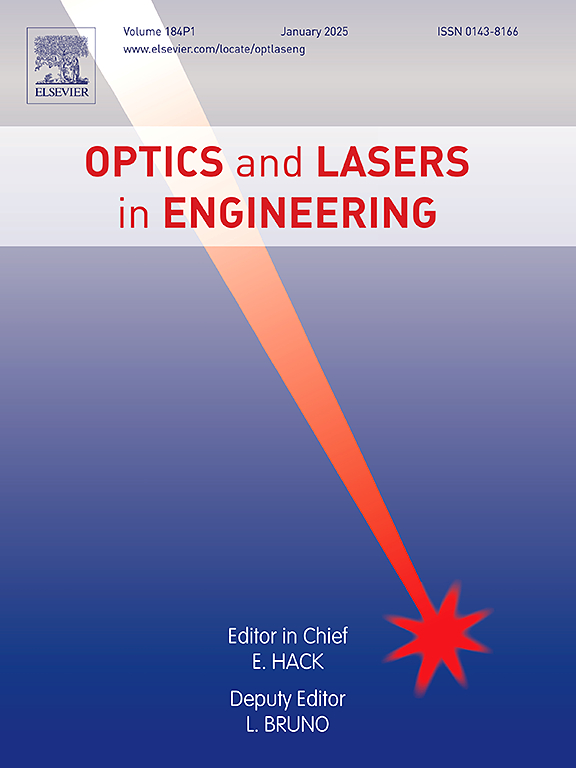一种与幅值相关的飞行时间成像系统误差减小方法
IF 3.5
2区 工程技术
Q2 OPTICS
引用次数: 0
摘要
飞行时间(ToF)成像系统以其高帧率、高分辨率和鲁棒性被广泛应用于各个领域。然而,与振幅相关的误差仍然是一个重大挑战,严重影响距离测量的准确性。为了解决这一问题,我们提出了一种新的方法来降低ToF成像系统的幅值相关误差。首先对幅值相关误差的来源进行了全面分析,将误差分为距离因素、传播因素和噪声因素三类。在此基础上,提出了一种距离自适应调整、积分时间控制和自适应距离计算三阶段的方法,以分别减少这三类因素。实验结果表明,该方法降低了深度图像的均方根误差,提高了峰值信噪比,从而显著提高了ToF成像系统的性能。我们认为本研究为ToF成像系统的误差减小提供了新的见解,并为提高三维成像系统的图像质量提供了有价值的参考。本文章由计算机程序翻译,如有差异,请以英文原文为准。
An amplitude-related error reduction method for Time-of-Flight imaging system
Time-of-Flight (ToF) imaging system are widely used across various fields due to their high frame rates, high resolution, and robust performance. However, amplitude-related error remains a significant challenge, severely impacting the accuracy of distance measurements. To address this issue, we propose a novel method for reducing amplitude-related error in ToF imaging system. Initially, a comprehensive analysis on the sources of amplitude-related error is conducted, which divide the error into three categories, including distance factor, propagation factor, and noise factor. Based on the analysis, a three-stage method is proposed, including distance-adaptive adjustment, integration time control, and adaptive distance calculation, aiming to reduce the three types of the factors, respectively. Experimental results demonstrate that our method reduces the root mean square error and improves the peak signal-to-noise ratio of the depth images, thus significantly enhancing the performance of ToF imaging systems. We believe that this study provides new insights into error reduction of ToF imaging system and offers a valuable reference for improving the image quality of three-dimensional imaging systems.
求助全文
通过发布文献求助,成功后即可免费获取论文全文。
去求助
来源期刊

Optics and Lasers in Engineering
工程技术-光学
CiteScore
8.90
自引率
8.70%
发文量
384
审稿时长
42 days
期刊介绍:
Optics and Lasers in Engineering aims at providing an international forum for the interchange of information on the development of optical techniques and laser technology in engineering. Emphasis is placed on contributions targeted at the practical use of methods and devices, the development and enhancement of solutions and new theoretical concepts for experimental methods.
Optics and Lasers in Engineering reflects the main areas in which optical methods are being used and developed for an engineering environment. Manuscripts should offer clear evidence of novelty and significance. Papers focusing on parameter optimization or computational issues are not suitable. Similarly, papers focussed on an application rather than the optical method fall outside the journal''s scope. The scope of the journal is defined to include the following:
-Optical Metrology-
Optical Methods for 3D visualization and virtual engineering-
Optical Techniques for Microsystems-
Imaging, Microscopy and Adaptive Optics-
Computational Imaging-
Laser methods in manufacturing-
Integrated optical and photonic sensors-
Optics and Photonics in Life Science-
Hyperspectral and spectroscopic methods-
Infrared and Terahertz techniques
 求助内容:
求助内容: 应助结果提醒方式:
应助结果提醒方式:


